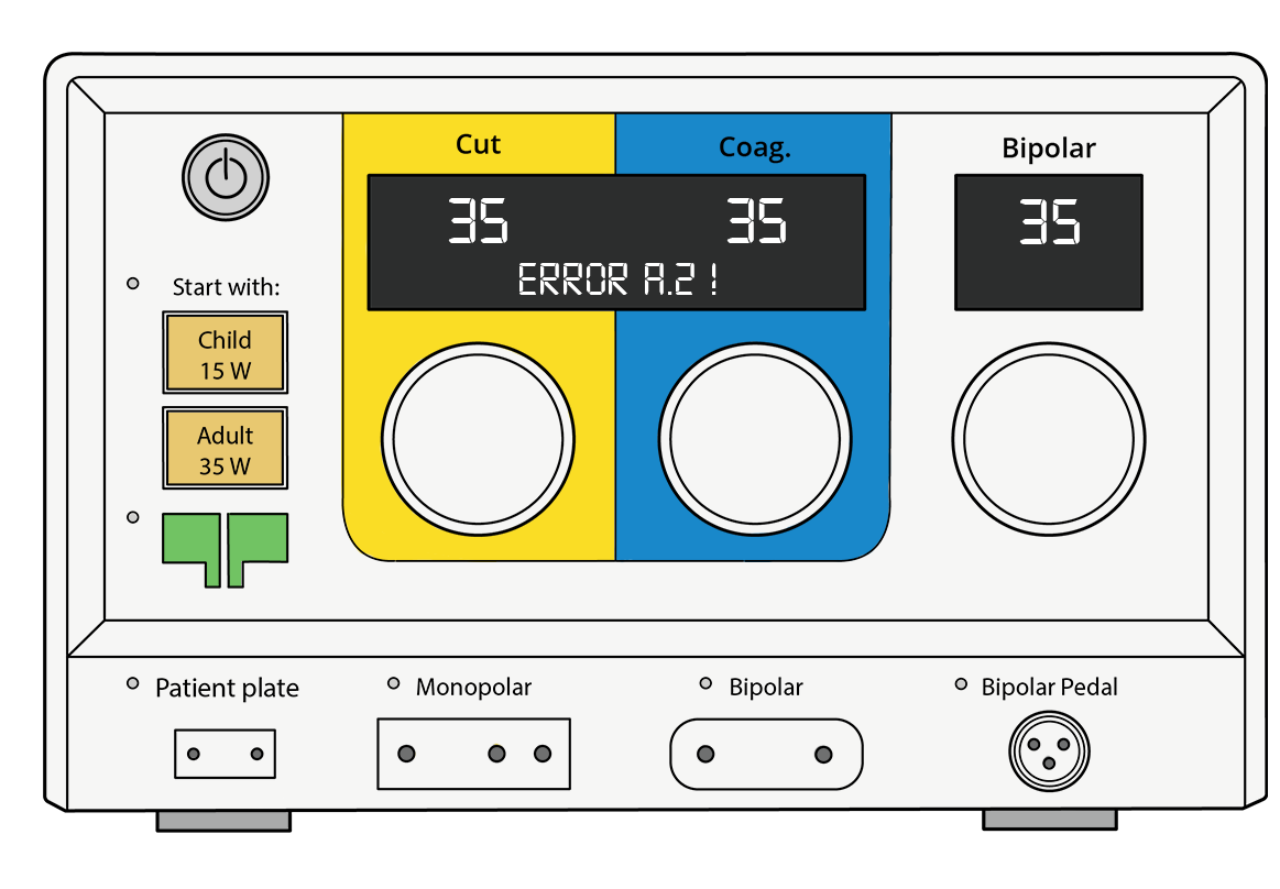The Equipment Journey as a tool to design safe surgical equipment for low-and middle income countries
ongoing
Master thesis by Larissa Hesselink
In low- and middle income countries there is a need for safe and affordable high quality surgical equipment. Nowadays, electrosurgical units are part of the standard equipment in operation theatres worldwide, since electrosurgery comes with many advantages such as reduced blood loss. However, the technology of electrosurgery also carries several safety risks such as alternative electrical pathways or current leakage which often have burn wounds as a result. The problem is that electrosurgical equipment was not designed with the low-resource healthcare context in mind. And as research shows many hazardous situations are frequently caused by electrosurgical equipment use in low-resource countries (Oosting, 2018). The aim of this study is to determine how the low-resource healthcare context triggers safety risks to occur. Therefore, the general technology related risks, the journey of the electrosurgical equipment in terms of activities, and the user characteristics are researched. In the user study special attention is paid to the users’ knowledge about electrosurgery. The research data was collected by conducting a literature study, and by using a qualitative case study approach. In a Kenyan national hospital fourteen surgeries were observed and semi-structured interviews were held with users of the electrosurgical equipment. The data was used to map out the electrosurgical equipment journey including all the phases and activities the equipment is involved in. Additionally, user profiles were created. The results show that the electrosurgical equipment journey contains following phases: procurement, pre-treatment, surgical treatment, post treatment, maintenance, repair and disposal. The main users of the electrosurgical equipment are the biomechanical engineering technician (BMET), the nurse, the surgical assistant, the surgeon and medical students. What is striking is that only the BMET learn about the principles of electrosurgery during his/her education.

The study results reveal that the interplay of safety risks generally related to electrosurgery, contextual factors, and user characteristics trigger several safety concerns. The risks lead from the selection of too high power settings to incorrect placement of the return electrode plate, and not knowing how to react in case of an system error. The study reveals that many of those safety concerns are caused by the medical staff’s lack of knowledge about the principles and risks of electrosurgery, and by an interface design that does not consider these user characteristics and needs. On this basis, a new interface of the electrosurgical unit and additional information stickers for safe equipment use are developed during this project. The equipment journey is used to pinpoint safety concerns and related root causes which are planned to resolve. Furthermore, the journey helps to determine where the design intervention should be placed. It is recommended to further develop the design concepts in the future and test their usability with intended users. The equipment journey for discovering safety concerns appeared not only to be valuable within this project. An evaluation of the equipment journey revealed that the tool is also valuable for other designers/researchers to empathize with the low-resource healthcare setting, and to gain insights into the journey of the equipment and the related safety concerns. Future research should explore if the equipment journey is also suitable for mapping out the journey and safety concerns of other surgical equipment.
You can check the full thesis report here.